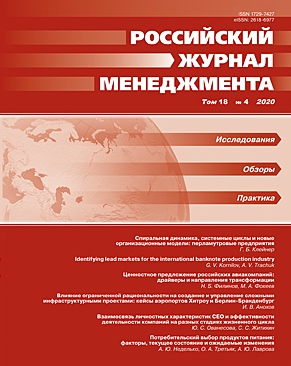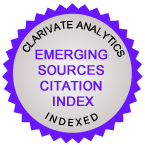Ценностное предложение российских авиакомпаний: драйверы и направления трансформации
DOI:
https://doi.org/10.21638/spbu18.2020.403Аннотация
Отрасль пассажирских авиаперевозок является одной из наиболее пострадавших в результате антикоронавирусных ограничений, и ее посткризисное восстановление будет происходить в условиях изменений потребительского поведения и, следовательно, конфигурации ценностного предложения. Подобные трансформации ценностного предложения уже наблюдались в прошлом. Поэтому анализ текущей ситуации невозможен без рассмотрения эволюции ценностного предложения авиакомпаний в течение последних 30–40 лет. В работе на основании систематического обзора литературы определены направления развития ценностного предложения авиакомпаний. Эмпирическое исследование рынка внутрироссийских пассажирских авиаперевозок состояло из двух этапов. На первом этапе методом кейс-исследования определены направления посткризисного развития ценностного предложения перевозчиков. На втором этапе проведен опрос 808 пассажиров, который показал восприятие подобных изменений и их значимость при выборе авиакомпании. Эмпирические результаты демонстрируют переход авиакомпаний к расширению перечня доступных пассажиру услуг, что позволяет привлекать новые группы пассажиров и повышать их лояльность. С точки зрения пассажира, подобное расширение дифференцирует перевозчиков и одновременно усложняет потребительский выбор.
Ключевые слова:
Ценностное предложение авиакомпаний, факторы потребительского выбора авиакомпаний, российский рынок авиаперевозок, стратегии кастомизации ценностного предложения
Скачивания
Библиографические ссылки
REFERENCES IN LATIN ALPHABET
Translation of references in Russian into English
Загрузки
Опубликован
Как цитировать
Выпуск
Раздел
Лицензия
Статьи журнала «Российский журнал менеджмента» находятся в открытом доступе и распространяются в соответствии с условиями Лицензионного Договора с Санкт-Петербургским государственным университетом, который бесплатно предоставляет авторам неограниченное распространение и самостоятельное архивирование.





